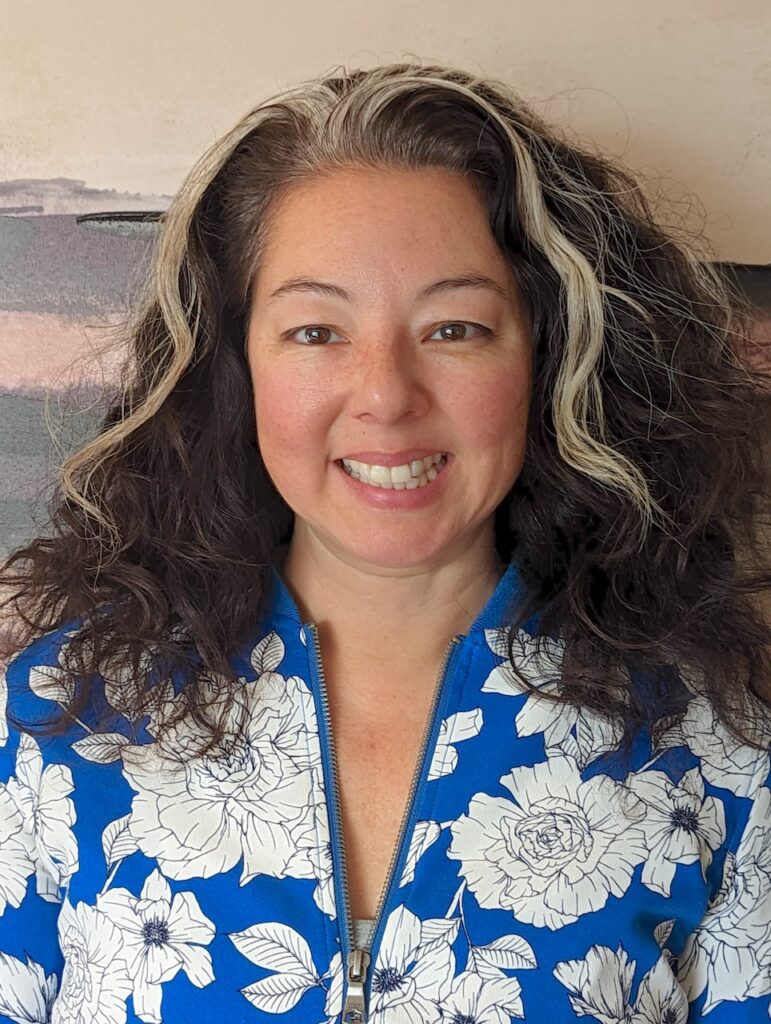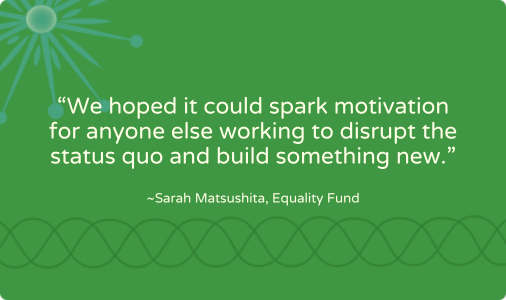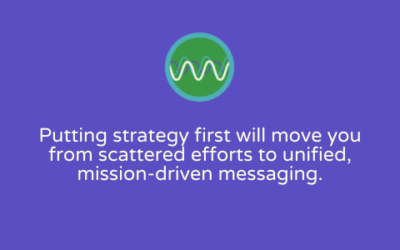Have you ever struggled with the right format for your nonprofit’s annual report? A printed document, a PDF posted on your website, a fully interactive microsite… What about a podcast series?
Earlier this year, my friend and colleague in the nonprofit communications space Angela DeBurger shared the Equality Fund’s podcast series, Moonshot: Making the Equality Fund, on LinkedIn. I later learned from their Director of Communications, Sarah Matsushita, that this was an experiment to explore formats outside of a traditional annual report.
Sarah is a wonderful and talented nonprofit communicator who I first met when she was at the Ontario Nonprofit Network, where she brought me to help with a content strategy for the Decent Work for Women microsite. Intrigued by the Equality Fund’s innovative annual report, I invited Sarah to share some of the background and backstory behind this approach with us, and she agreed!
In this interview with Sarah, we get behind the scenes of how and why the Equality Fund used a podcast series to go beyond a more traditional annual report format. We discuss how it helped the organization tell a story, showcase impact, and deliver their brand messaging.
Interview with Sarah Matsushita: annual report, podcasting and storytelling
Why is storytelling fundamental to your organization’s communications?
“As a complex organization, storytelling helps convey our work quickly and succinctly. It makes it easier for our team to share key messages, information, and assets, such as resources, videos, or reports.”
What inspired you to deliver your annual report as a podcast series?
“We’ve always tried to be innovative with our approach to annual reports (interactive microsites, embedded audio clips, stories directly from our partners), and we were looking for a creative way to produce something special with a small but mighty team. A podcast was a way to showcase our partners within the story.
As well, by this stage of our organization, we had significantly grown the number of tools and resources for staff to share more about our work, alongside financial reports.”

How did you decide what story to tell?
“We had been receiving questions from partners, funders, and others about how we created the Equality Fund, and we realized that our origin story didn’t live anywhere. As we reached a key milestone in the Equality Fund’s journey, we wanted to capture our origin story for documentation, inspiration for the next five years, and accountability – an important role for an annual report. We also kept in mind that beyond sharing insights and lessons, we hoped it could spark motivation for anyone else working to disrupt the status quo and build something new.
The incredible podcast producer we worked with, Katie Jensen of Vocal Fry Studios, guided the direction for the series. We ultimately decided on three episodes, with a focus on the people at the centre of movement-building, featuring the leaders that were instrumental to helping to create the vision and making it happen.”
How did this story connect to the Equality Fund’s brand/key messages?
“Before this series, we really thought that we were moving into a new brand essence. But as we returned to our origin story, we returned to our brand 1.0. While working on the podcast last year, we were anticipating that global change was coming. We knew our tagline (When we move together, we move the world) and key messages — about collective impact, teamwork, and collaboration — would resonate.”
How have you used this podcast to support other activities?
“The series has supported our efforts in both expected and unexpected ways – the latter including media pitches, hiring, and staff onboarding. We’ve often relied on booklet-form content, such as annual reports and recent reports, as backgrounders for our media pitches. However, a couple of tier one media outlets, like CNN, revealed that they had gone directly to the podcast to get oriented, so we realized we could use the series in pitches going forward.
Our people, equity, and culture team also had a great idea to use the podcast series in hiring, onboarding, and interviews with new and existing staff. It offers a great question and conversation starting point.”
Were there any unexpected benefits of this approach?
“The podcast series highlighted how the people in our community perceive the Equality Fund. Seeing the creation of the Fund through the perspectives of our incredible supporters and stakeholders, including government allies, was truly fascinating. From the initial funding to the present day, witnessing the tapestry of their expectations — which we have met and exceeded — was enlightening. The recounting of their experiences at the launch of the Equality Fund was quite powerful. It wasn’t solely about what the government was doing, but rather about being part of this remarkable event and understanding how it inspired each player’s role.”
How will this project impact your storytelling going forward?
“The range of people we consider our storytellers is much broader than we previously thought. We think about who is impacted, and the media, for example, will ask for the person on the ground. Sometimes, the individual stories are easier to tell, but because we are a global fund that resources organizations, groups, and other feminist funds, our role is to convey the collective impact, connecting the different dots of a broader narrative of change.
Another example: a couple of years ago we put out a global call for submissions for an art project. We were looking for alignment with our messaging, but in their submissions, these global artists told incredible stories about what feminism and women’s rights mean to them. And we realized having them directly share what inspires their work is way more powerful than us writing a summary.”
Takeaways and next steps
There are so many valuable insights to take away from what Sarah shared in this interview. Here are some that stood out for me:
- The opportunities and potential that were opened up by taking a risk with a very creative annual report approach.
- The realization that the organization’s existing brand messaging remained relevant and useful for shaping communications.
- The importance of well-rounded storytelling and opening up the parameters of whose stories we share.
On this last point, I’d like to share two items for further reading.
- Sarah highlighted the importance of thinking more broadly than “participant” stories. This is one area in which a well-structured brand narrative can be a big help. When you tell stories that illuminate not just your IMPACT messaging, but key messages about your nonprofit’s IDENTITY, WHY, and HOW, you’ll convey your organization’s broader narrative. I offer some guidance and practical examples in this post: Communicating your nonprofit’s brand narrative through storytelling.
- And since doing this work requires finding the right stories check out this post recently published on The Communications Network blog: Want to tell better stories? The answer is not story telling, but story finding.




